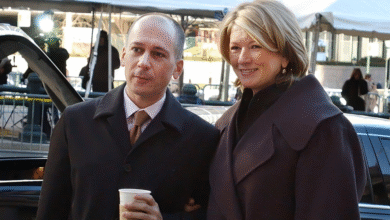Unveiling the Enigma Who Is Juan Ramirez Montroso and Why Is He Everywhere Online

In the vast digital landscape of today’s internet, few names spark as much curiosity and confusion as Juan Ramirez Montroso. If you’ve scrolled through TikTok lately or dipped into Threads, you’ve likely stumbled upon whispers, memes, and heated debates about this shadowy figure. Is a celebrated artist from Guatemala? A tragic inmate lost in the prison system? Or perhaps just a clever internet hoax designed to baffle us all? Whatever the truth, one thing is clear: has captured the collective imagination, turning into a viral sensation that blurs the lines between fact, fiction, and folklore. In this deep dive, we’ll explore the swirling narratives around Juan Ramirez Montroso, unpack why his name is buzzing across social media, and examine what his story reveals about our online world. Buckle up—this is a tale that’s as intriguing as it is elusive.
The Rise of Juan Ramirez Montroso: From Obscurity to Online Stardom
The story of Juan Ramirez Montroso didn’t start with a bang; it simmered quietly before exploding into the spotlight. Around mid-2025, searches for began spiking on platforms like Google and TikTok. What began as scattered posts—perhaps a quirky obituary snippet or a cryptic video—snowballed into a full-blown phenomenon. By September 2025, hashtags like #JuanRamirezMontroso were racking up millions of views, with users sharing theories, fan art, and even mock documentaries.
Why now? Experts point to the algorithm-driven nature of social media. A single viral clip, maybe discussing a supposed “lost legend” or a prison scandal, can ignite a firestorm. For Juan Ramirez Montroso, the trigger seems tied to a mix of cultural nostalgia and true-crime fascination. Latin American heritage plays a role too—names like evoke images of resilient storytellers from regions rich in oral traditions, making him an easy canvas for projection. But unlike real celebrities, has no verified Wikipedia page, no official interviews, and no clear digital footprint before 2025. This vacuum is what fuels the fire: people love a good mystery, and delivers one in spades.
Imagine logging onto your feed and seeing a video of a wooden sculpture said to be carved by, capturing the soul of indigenous life. Or flipping to another post about his untimely death behind bars. The contrast is jarring, yet addictive. Social media thrives on such dichotomies, and has become the poster child for it. His “rise” isn’t about fame in the traditional sense; it’s about how a name can morph into a mirror, reflecting our own curiosities and biases.
The Many Faces of Juan Ramirez Montroso: Sculptor, Criminal, or Symbol
At the heart of the Juan Ramirez Montroso enigma lies a web of conflicting identities. Let’s break them down, starting with the most poetic tale: as the Guatemalan sculptor. In this narrative, he was a master craftsman born in the lush highlands of Guatemala, where he channeled the struggles of his people into breathtaking wooden artworks. His pieces, allegedly exhibited in small galleries before his death in 2017, depicted indigenous faces etched with emotion—joy, sorrow, defiance. Proponents claim Juan Ramirez Montroso drew from his own life, growing up amid post-colonial turmoil, using art as a quiet rebellion. Though no major museums credit him, online enthusiasts share “rediscovered” photos of his work, praising how captured the essence of cultural survival.
Shift gears to a darker chapter: Juan Ramirez Montroso the convicted criminal. Here, he’s portrayed as a man ensnared by the U.S. justice system, sentenced to death row in the late 1980s for a litany of charges—murders, assaults, and more. Confined to Telfair State Prison in Georgia, reportedly spent decades awaiting execution, his story resurfacing in 2025 amid lawsuits from his family alleging neglect. They argue his death, ruled “natural causes” at just 27, was anything but—pointing to poor medical care and systemic failures. This version paints as a victim of circumstance, perhaps a product of poverty or gang violence in Latin American immigrant communities. TikTok videos dissect court documents (or what pass for them online), fueling calls for prison reform and sparking empathy for the overlooked.
Then there’s the inspirational angle: Juan Ramirez Montroso as an everyday hero or business visionary. Some threads describe him as a finance whiz who spoke at global forums, founding consultancies that bridged cultures. Others see him as a humble farmer or craftsman, embodying the grit of Latin American resilience—”son of Ramiro,” as the surname suggests, tied to rugged “montroso” landscapes. In this light, isn’t a headline-grabber but a symbol of quiet endurance, passing down lessons of community and heritage through unwritten stories.
Which is the real Juan Ramirez Montroso? The truth might be none—or all. These personas overlap in themes of identity and struggle, suggesting is less a person and more a cultural archetype. Online sleuths have scoured archives, but findings are thin: a vague obituary here, a mismatched photo there. It’s possible started as a real individual whose story got embellished, or he’s a deliberate fabrication, like those urban legends that evolve with each retelling.
Social Media’s Role in Amplifying the Juan Ramirez Montroso Mystery
No discussion of Juan Ramirez Montroso is complete without crediting the platforms that made him a star. TikTok leads the charge, with short-form videos blending spooky music, dramatic reenactments, and user theories. One popular trend? “What if is still alive?” Creators stitch together clips of supposed sightings—from a sculptor in Guatemala to a shadowy figure in U.S. courtrooms—garnering likes and shares by the thousands.
Threads and Twitter (now X) add depth, with long-form posts debating ethics: Is hyping Juan Ramirez Montroso respectful or exploitative? Reddit communities dissect “evidence,” from linguistic breakdowns of his name (Spanish roots meaning wise son from the mountains) to timeline analyses. Even Instagram reels contribute with artistic tributes, turning into meme fodder—think Photoshopped images of him as a superhero or ghost.
This amplification isn’t accidental. Algorithms favor controversy, so Juan Ramirez Montroso‘s ambiguity keeps him trending. But it raises red flags: misinformation spreads fast. Fact-checkers note how unverified claims about his death or crimes could harm real families or distort history. Yet, for many, represents the fun side of the internet—a puzzle to solve together, fostering community in a divided world.
The Cultural and Historical Echoes in Juan Ramirez Montroso’s Tales
Dig deeper, and Juan Ramirez Montroso resonates with broader themes. His name screams Latin American heritage: “Juan” is everyman, “Ramirez” traces to medieval Spain, and “Montroso” hints at mountainous terrains common in Central America. This blend mirrors the diaspora experience—immigrants carrying stories across borders, only for them to fragment in translation.
Historically, figures like evoke real icons: think of artists like Diego Rivera, whose murals told tales of oppression, or inmates like those in the U.S. prison system, where Latinx individuals face disproportionate sentences. The sculptor narrative nods to indigenous revival movements in Guatemala, post-civil war. The criminal angle critiques mass incarceration, echoing cases where youth from marginalized backgrounds end up on death row.
In a global sense, Juan Ramirez Montroso highlights how oral traditions survive digitally. In pre-internet eras, names like his would spread via word-of-mouth; now, it’s pixels and posts. This evolution makes a bridge between old-world folklore and new-age virality, reminding us that stories, true or not, shape identity.
Implications of the Juan Ramirez Montroso Phenomenon: What Does It Mean for Us
Beyond the intrigue, Juan Ramirez Montroso prompts bigger questions. In an era of deepfakes and AI-generated content, how do we discern truth? His story underscores the dangers of echo chambers, where confirmation bias lets wild theories flourish. For Latin American communities, it could either celebrate heritage or perpetuate stereotypes—glorifying artists while vilifying criminals.
On the positive side, sparks education. Users research real issues: prison reform, cultural preservation, digital literacy. It encourages critical thinking—don’t just consume; question. As his buzz grows, perhaps it’ll lead to uncovering a genuine tale or inspiring original art.
Ultimately, Juan Ramirez Montroso teaches humility. We may never know the man (if he exists), but in chasing him, we learn about ourselves—our love for mysteries, our biases, our shared humanity.
FAQs
Q: Is Juan Ramirez Montroso a real person
A: The jury’s out—literally. While some narratives suggest he was a real sculptor or inmate, no concrete evidence confirms it. He might be a composite of stories or a viral invention.
Q: Why is Juan Ramirez Montroso trending on TikTok
A: Viral videos mixing art, crime, and mystery have hooked users. The unknown factor keeps the content shareable, with millions engaging in theories and recreations.
Q: What are the main stories about Juan Ramirez Montroso
A: Key ones include him as a Guatemalan artist who died in 2017, a death row prisoner in Georgia, or a symbol of everyday resilience. Each adds layers to the enigma.
Q: Has there been any official investigation into Juan Ramirez Montroso
A: Not that we know of. Social media drives the hype, but no government or major outlet has weighed in, leaving it to netizens.
Q: Could Juan Ramirez Montroso be fictional
A: Absolutely possible. Many online mysteries start as hoaxes or experiments, evolving into cultural touchstones. If so, it’s a testament to collective storytelling power.
Q: How can I learn more about Juan Ramirez Montroso without falling for fakes
A: Stick to diverse sources, cross-check facts, and focus on themes rather than specifics. Engaging with communities can help, but always verify.



